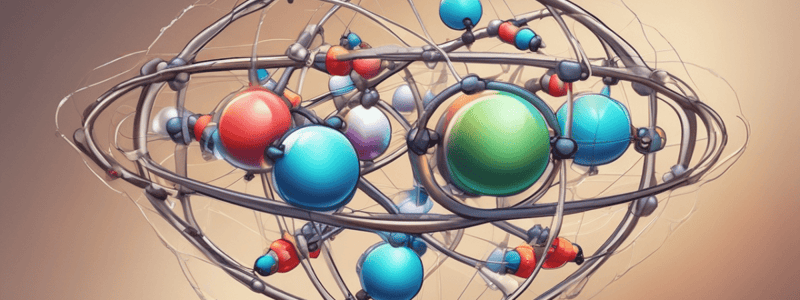Podcast
Questions and Answers
How is the periodic table arranged?
How is the periodic table arranged?
- In order of increasing atomic number (correct)
- In order of increasing electronegativity
- In order of decreasing atomic radius
- In order of increasing atomic mass
What is the result when an atom gains electrons?
What is the result when an atom gains electrons?
- It remains unchanged
- It becomes a negatively charged ion (correct)
- It becomes a neutral atom
- It becomes a positively charged ion
What is the term for a positively charged atom?
What is the term for a positively charged atom?
- Anion
- Ion
- Cation (correct)
- Molecule
Where are non-metals typically found on the periodic table?
Where are non-metals typically found on the periodic table?
How do you find the number of neutrons for a particular atom?
How do you find the number of neutrons for a particular atom?
What is the reason for an atom to be neutral?
What is the reason for an atom to be neutral?
What is the result when an atom loses electrons?
What is the result when an atom loses electrons?
Where are metals typically found on the periodic table?
Where are metals typically found on the periodic table?
What is a group of atoms that has a charge?
What is a group of atoms that has a charge?
Why are ions formed?
Why are ions formed?
Flashcards are hidden until you start studying




